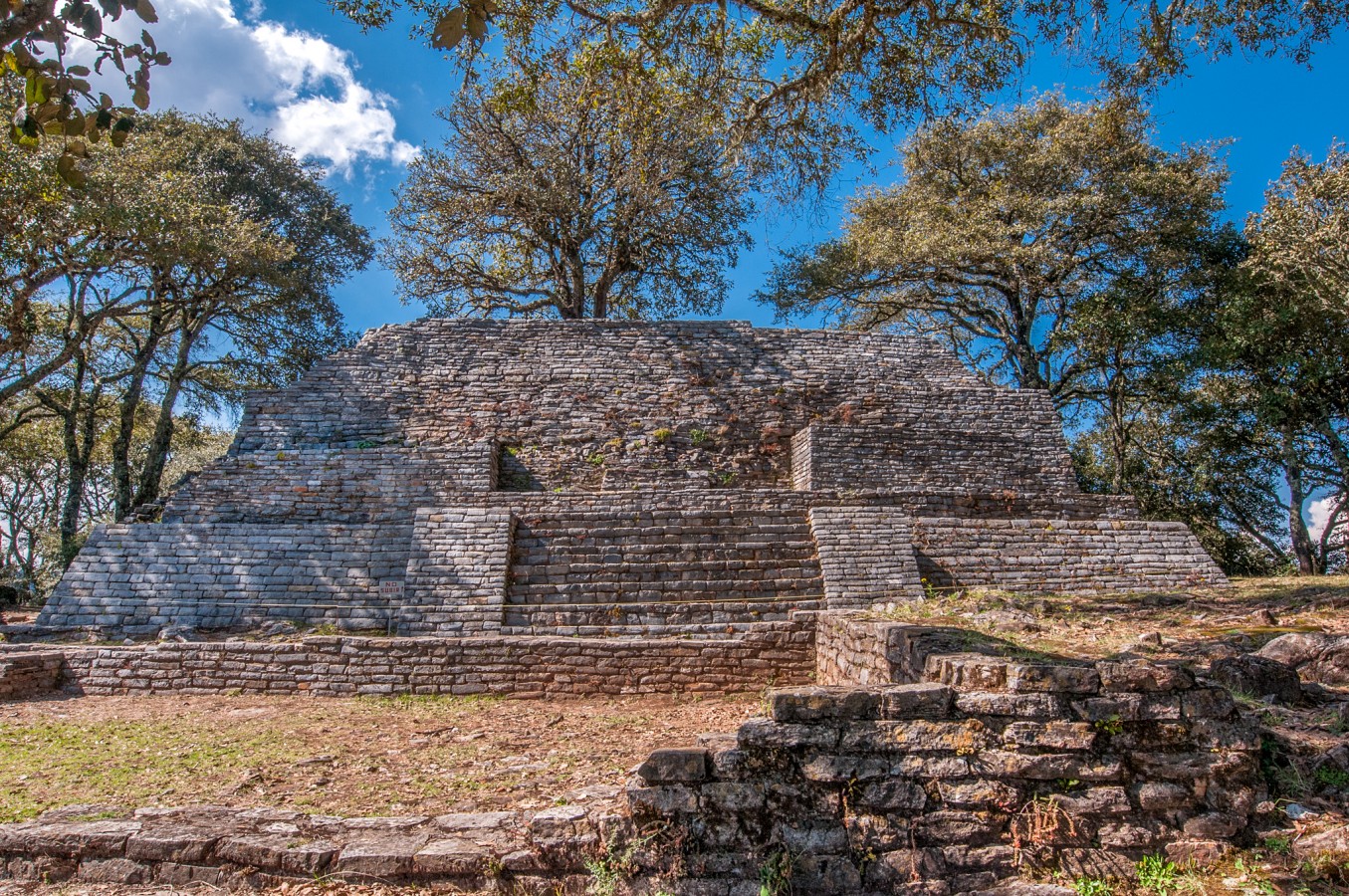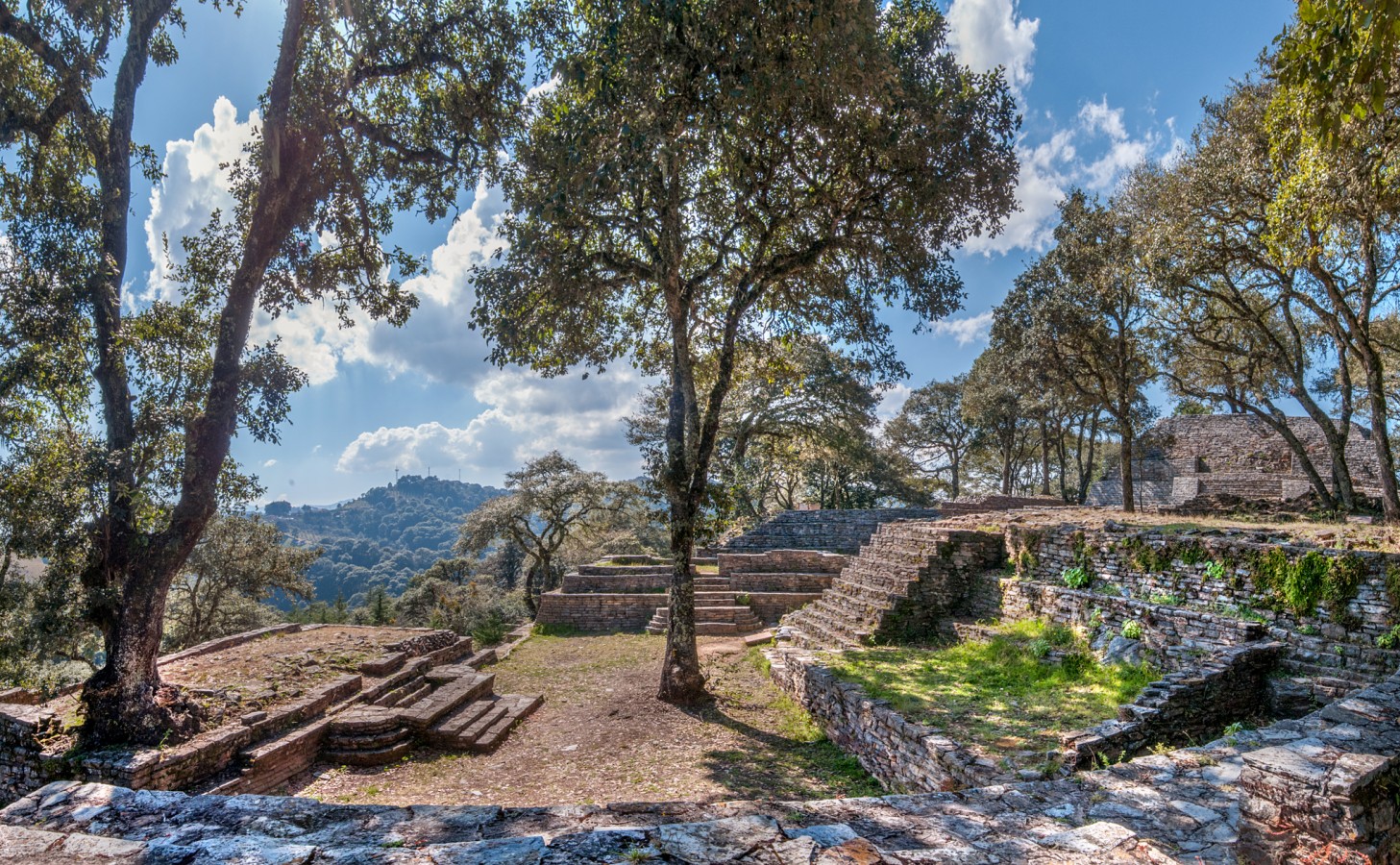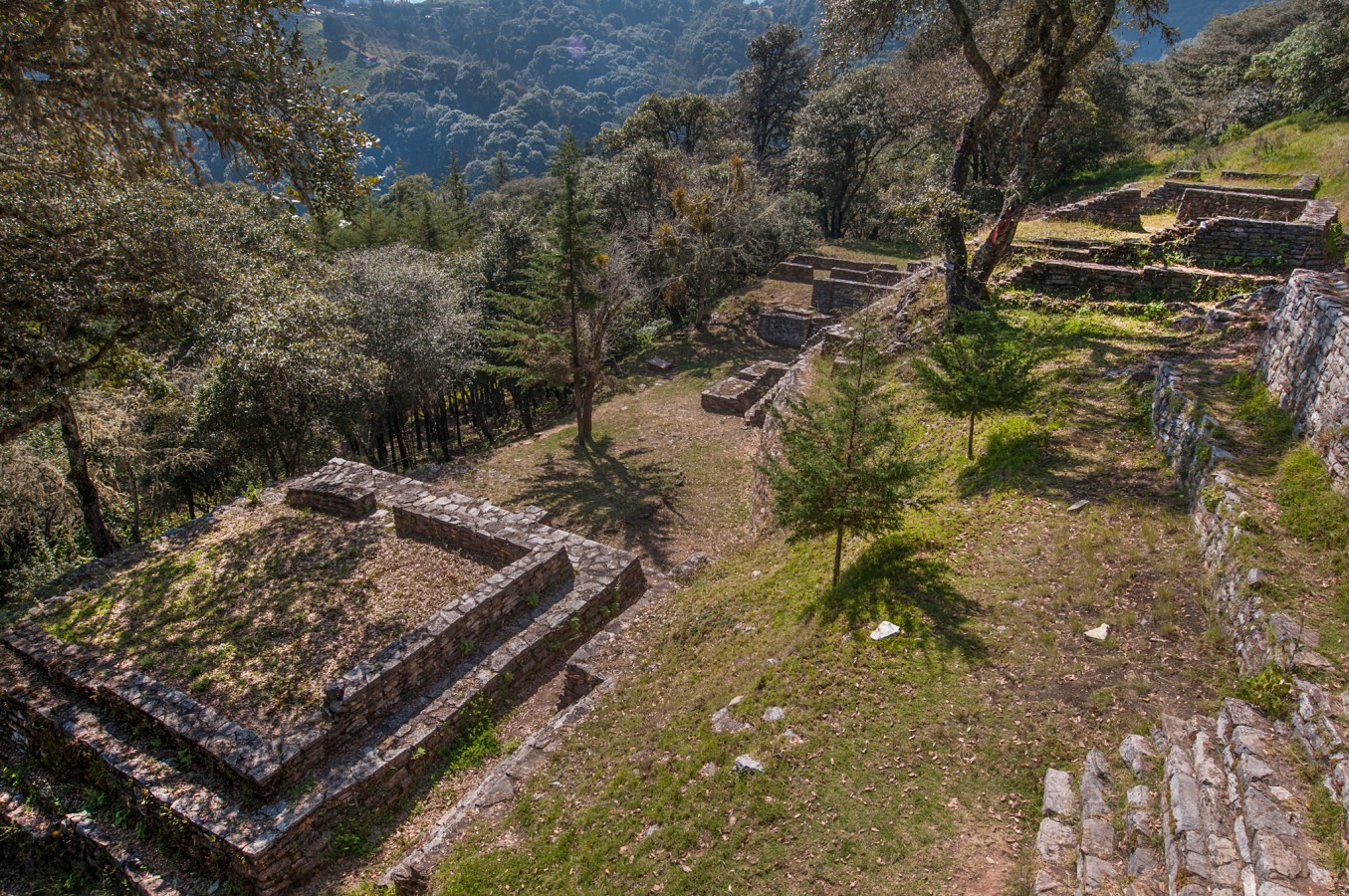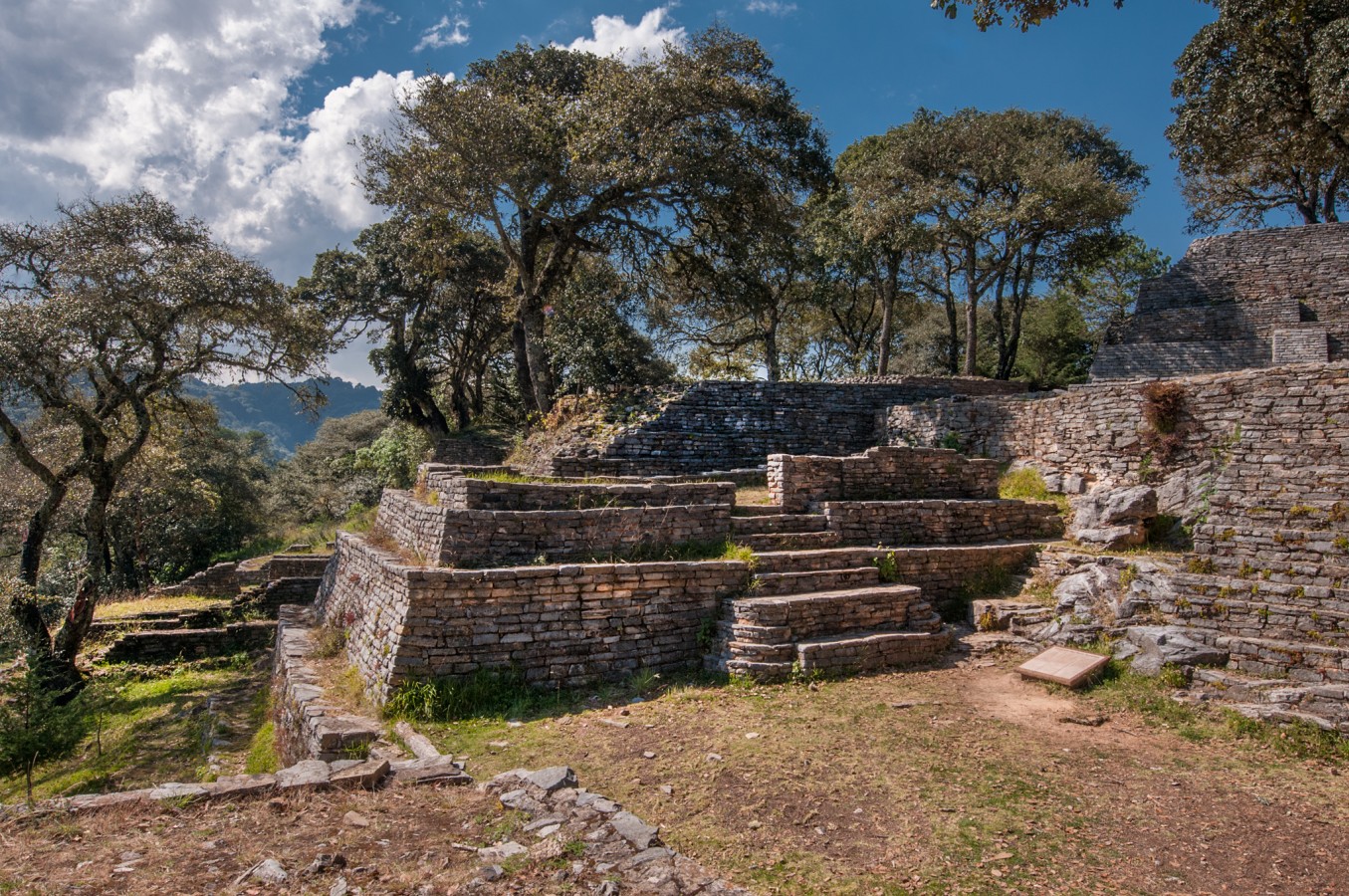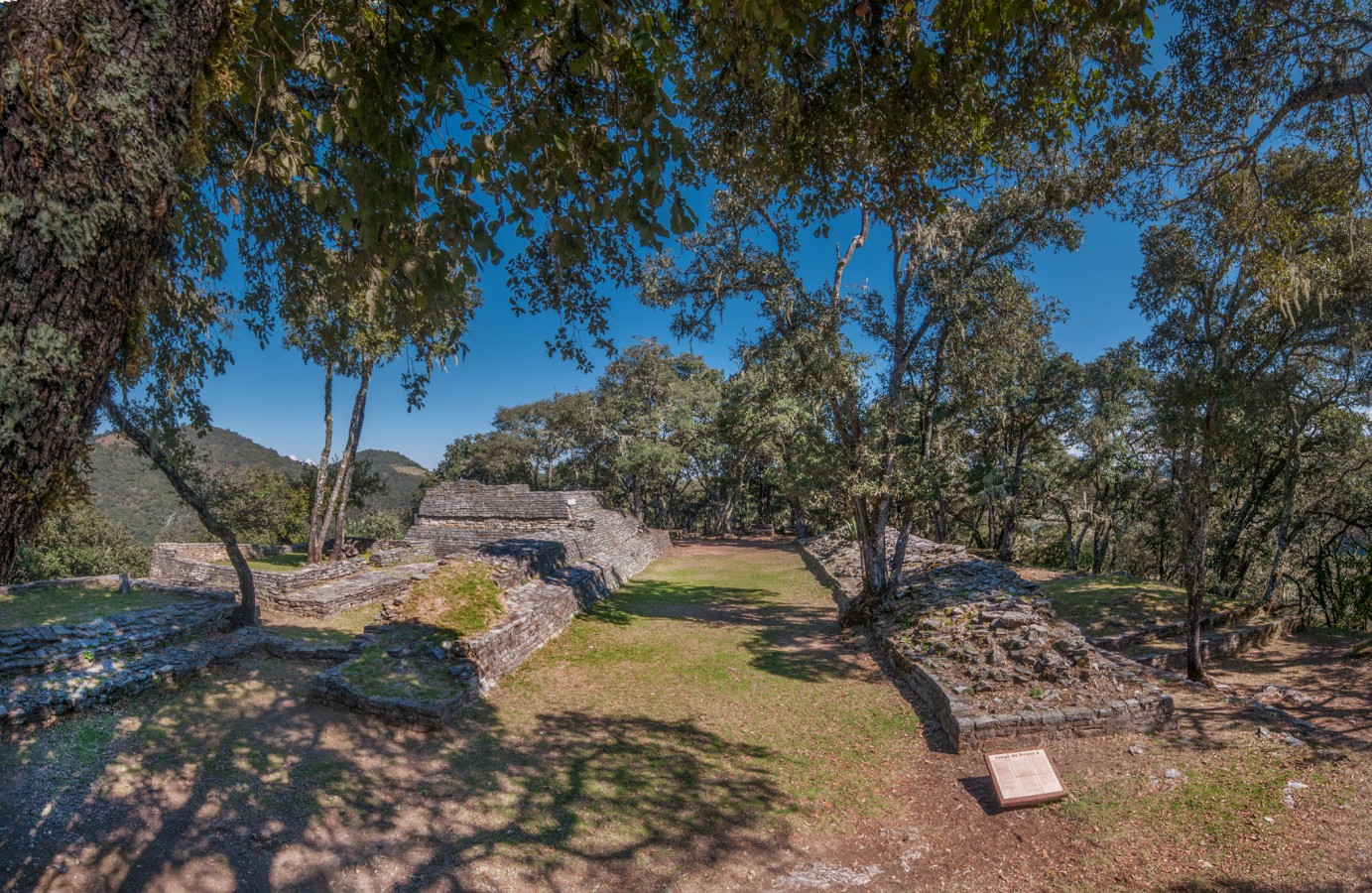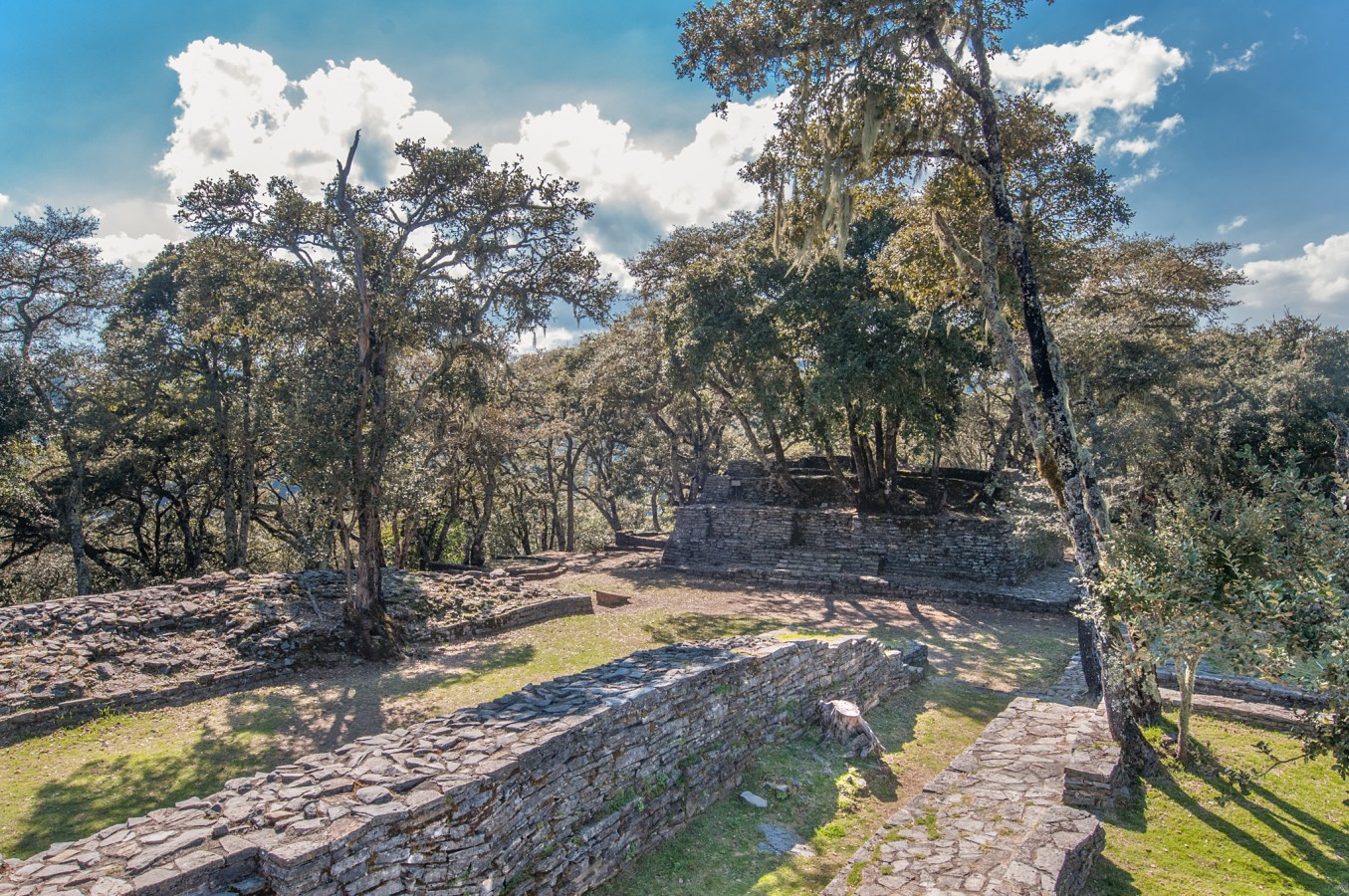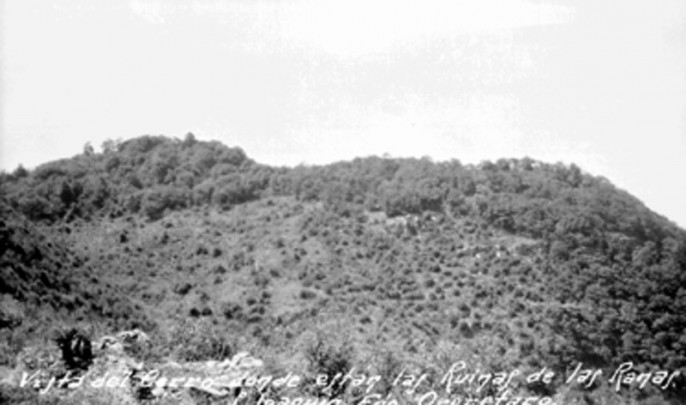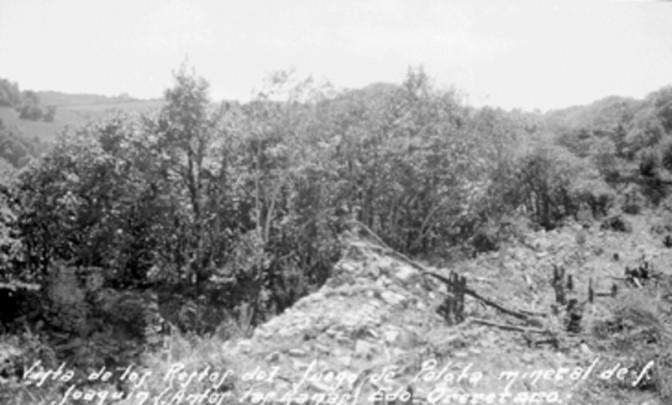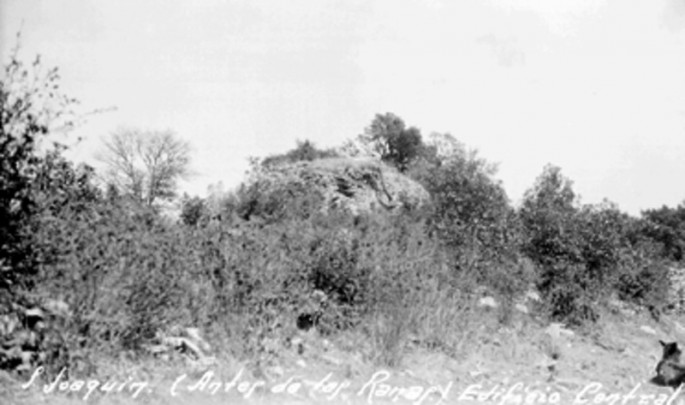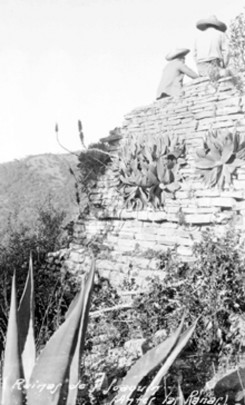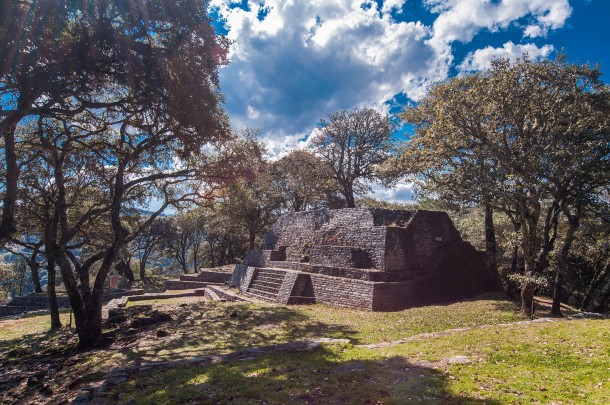Ranas
(The Frogs) Gets this name because upon their arrival the Spanish conquistadors found a lagoon full of these amphibians. Locally it is also known as "The City."
Its strategic geographic location allowed it to control trade routes, as well as to exploit the great diversity of ecological and mineral resources found in the region.
About the site
Las Ranas nestles in the southwestern Sierra Gorda, at one of the highest points of the municipality of San Joaquín. Surrounded by ravines and with a sole access point on the west side, it occupies the upper part of two hills which join to form a square. The ruggedness of the landscape led it to develop its own settlement pattern, which stands out on account of the location of its minor settlements. Las Ranas was part of a highland culture, which gave rise to a singular architectural style, ceramics and cultural practices.
Its inhabitants planned the city, selecting the location, determining the most efficient land use of the 37-acre site, and the optimal location of buildings. Traces have been found of more than 180, including two ballcourts, of which roughly 15 percent have been restored.
The economy of the towns of the Sierra Gorda was based on a mixture of productive activities, with the most notable being mining, hunting and gathering and seasonal agriculture. Las Ranas was linked to the extraction of cinnabar, a mineral which played a significant role because of the high demand for the pigment among Mesoamerican peoples.
The tasks of maintenance, restoration and investigation of the archeological site began in 1975 and they continue to the present, owing to the large size of the site.
Its inhabitants planned the city, selecting the location, determining the most efficient land use of the 37-acre site, and the optimal location of buildings. Traces have been found of more than 180, including two ballcourts, of which roughly 15 percent have been restored.
The economy of the towns of the Sierra Gorda was based on a mixture of productive activities, with the most notable being mining, hunting and gathering and seasonal agriculture. Las Ranas was linked to the extraction of cinnabar, a mineral which played a significant role because of the high demand for the pigment among Mesoamerican peoples.
The tasks of maintenance, restoration and investigation of the archeological site began in 1975 and they continue to the present, owing to the large size of the site.
Map
Did you know...
- Las Ranas has 14 pre-Hispanic mine entrances.
- This is the largest-scale mining area in the Sierra Gorda.
- There is an extraordinary view from the highest structures.
- The exploitation of cinnabar, a dark red mineral highly valued in Mesoamerica, was a source of wealth.
-
+52 (442) 245 5204
-
This email address is being protected from spambots. You need JavaScript enabled to view it.
Directory
Administrador de Zonas Arqueológicas del Centro INAH Querétaro
Armando Bahena Quintana
This email address is being protected from spambots. You need JavaScript enabled to view it.
+52 (442) 212 2036, ext. 308013

